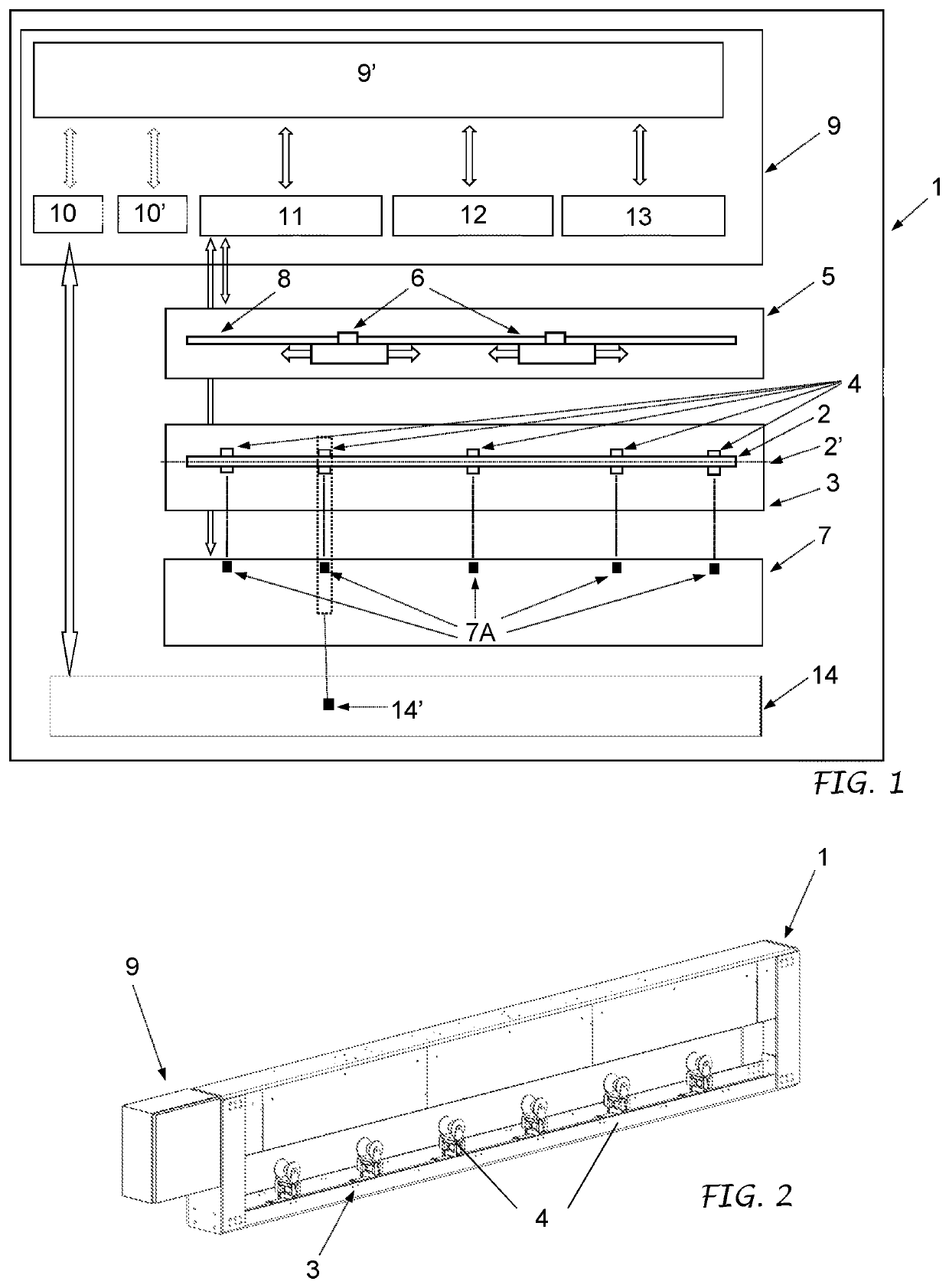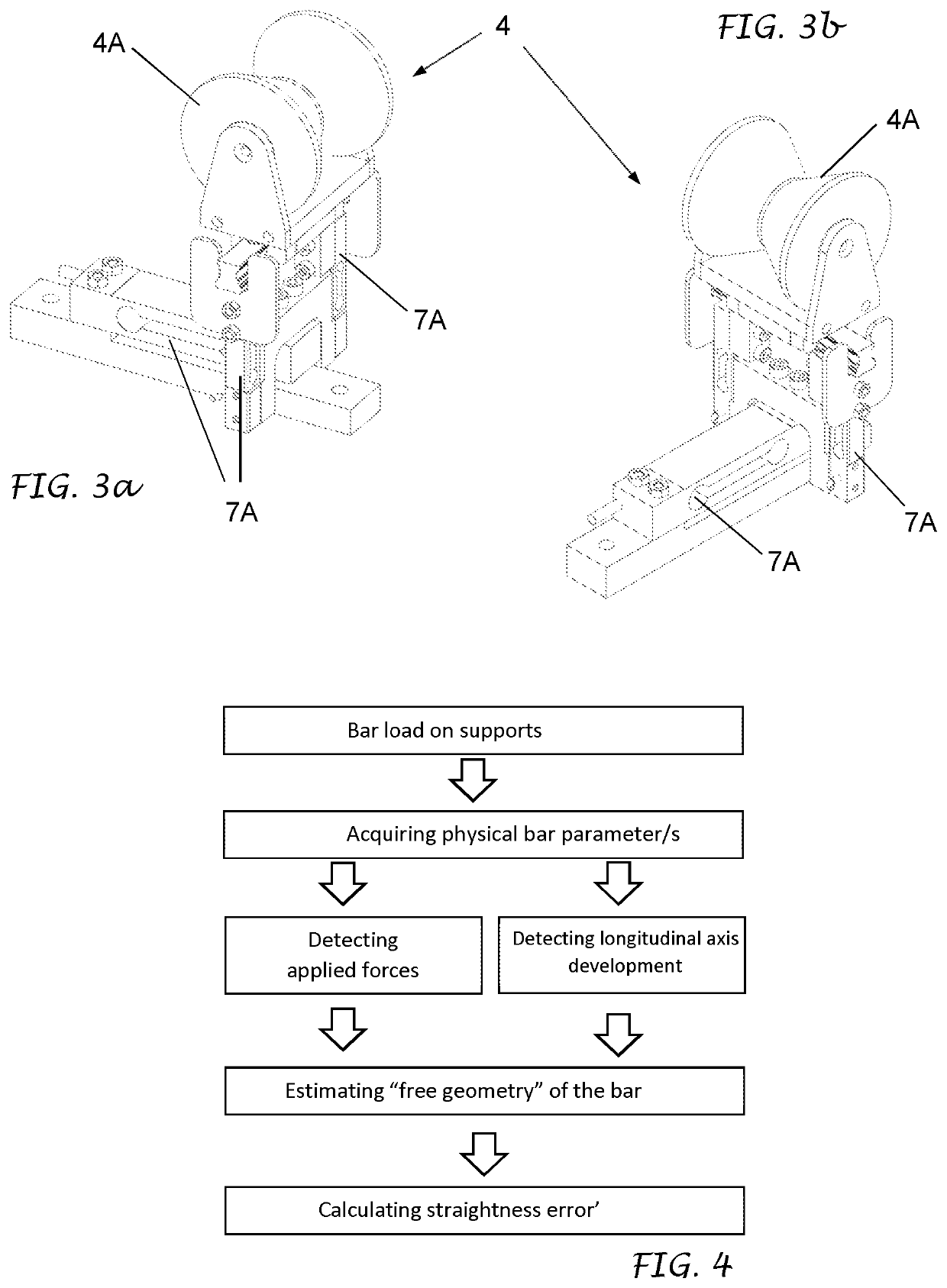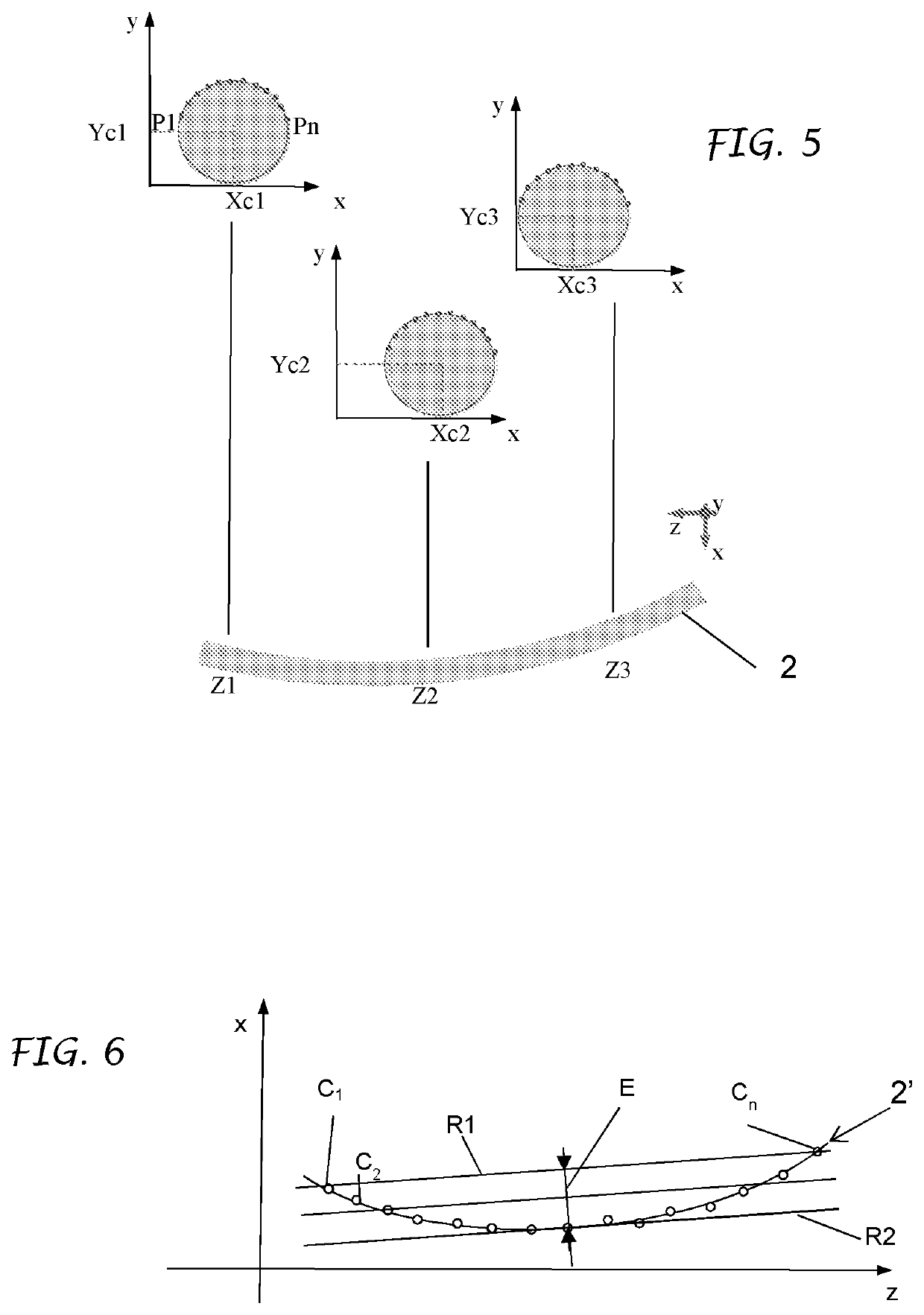Method and apparatus for measuring the straightness error of slender bodies, with compensation of gravity deformation
a technology of slender bodies and straightness errors, applied in the direction of measurement devices, error compensation/elimination, instruments, etc., can solve the problems of ineffective system in carrying out dimensional checks on the production line, inconvenient production line implementation, and long measurement time for the above-mentioned techniqu
- Summary
- Abstract
- Description
- Claims
- Application Information
AI Technical Summary
Benefits of technology
Problems solved by technology
Method used
Image
Examples
Embodiment Construction
[0043]In said drawings, 1 globally denotes a device for measuring the straightness errors of an elongated-shape element, such as a bar, shaft, tube and the like, hereinafter simply named bar 2. The bar can have a section of any geometry, for example circular, hexagonal, squared, etc., of any size and any material, preferably metal.
[0044]As schematically shown in FIG. 1, the measuring device 1 comprises:[0045]a supporting system 3, which remains static during the measurement cycle of each bar, for supporting the bar and composed of a plurality of fixed bearing elements 4 on which the bar under measuring is arranged. The bearing elements can be moved between one measurement and another whenever necessary;[0046]a first detecting element 5 to detect the development of the longitudinal axis of the bar 2 and comprising one or more first sensors 6, preferably optical sensors, for detecting the tridimensional geometry of the bar under measuring.[0047]a second detecting system 7 to detect th...
PUM
 Login to View More
Login to View More Abstract
Description
Claims
Application Information
 Login to View More
Login to View More - R&D
- Intellectual Property
- Life Sciences
- Materials
- Tech Scout
- Unparalleled Data Quality
- Higher Quality Content
- 60% Fewer Hallucinations
Browse by: Latest US Patents, China's latest patents, Technical Efficacy Thesaurus, Application Domain, Technology Topic, Popular Technical Reports.
© 2025 PatSnap. All rights reserved.Legal|Privacy policy|Modern Slavery Act Transparency Statement|Sitemap|About US| Contact US: help@patsnap.com



